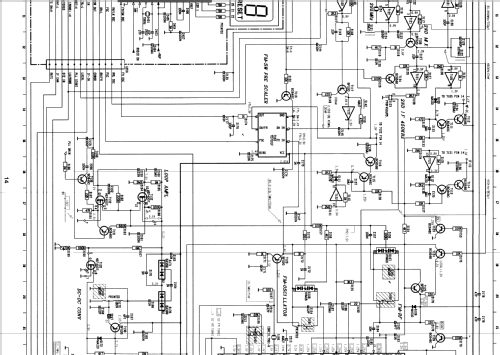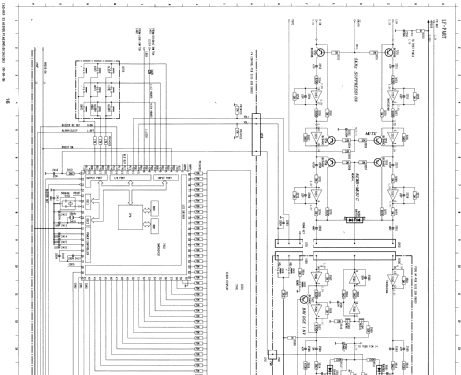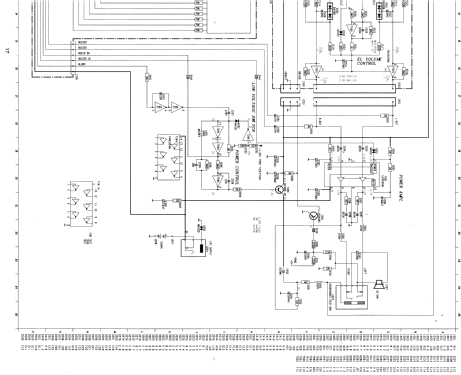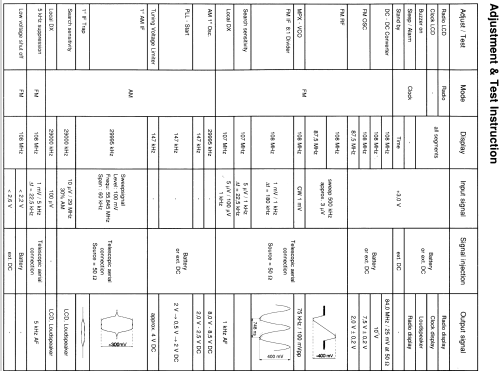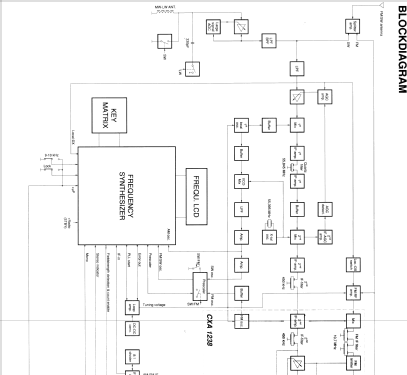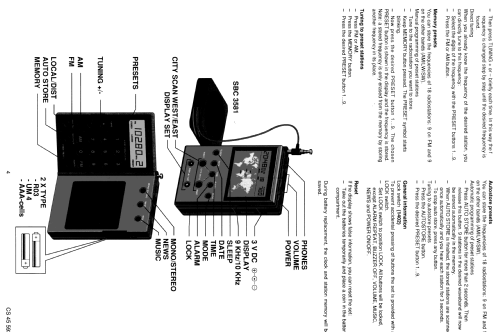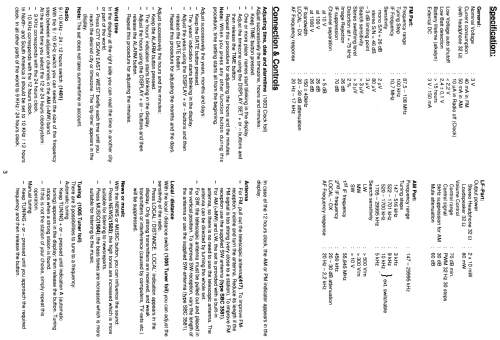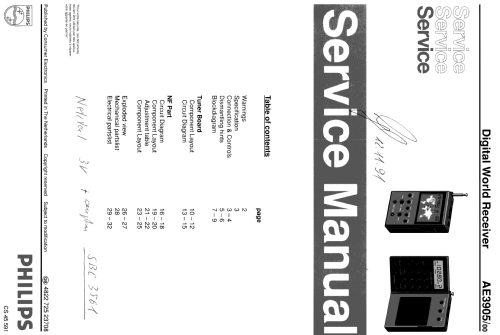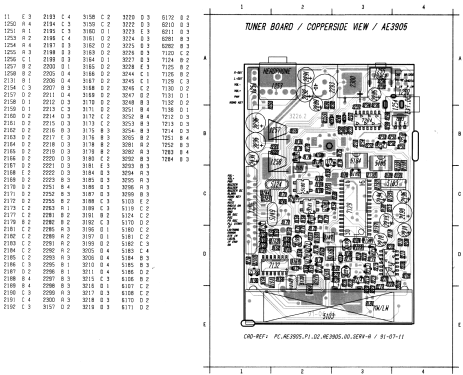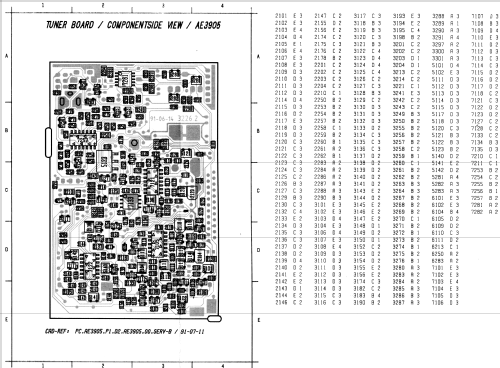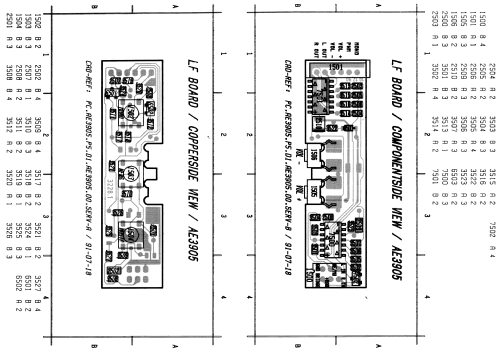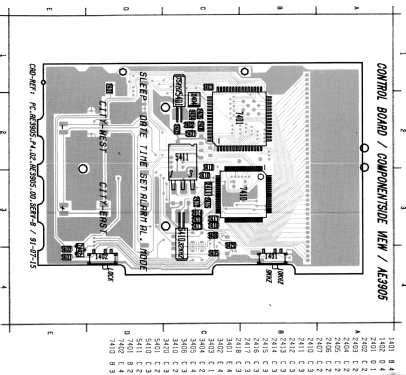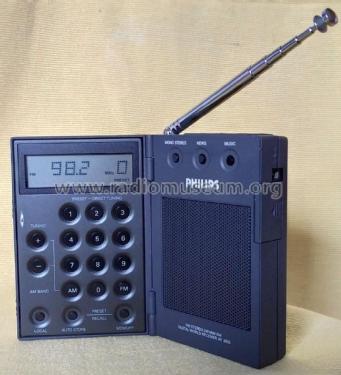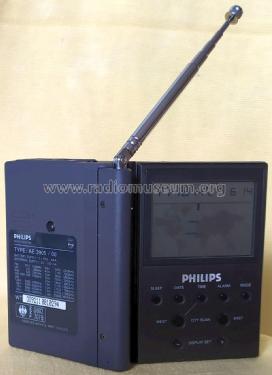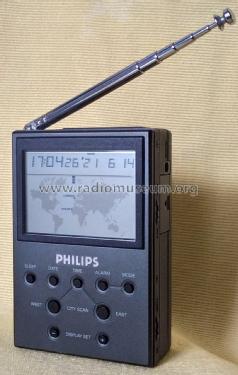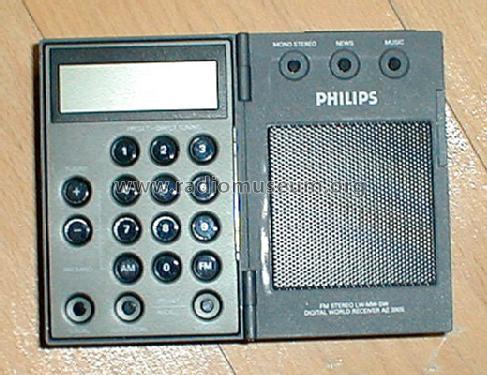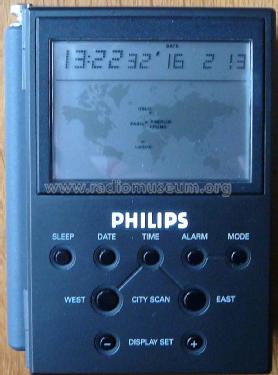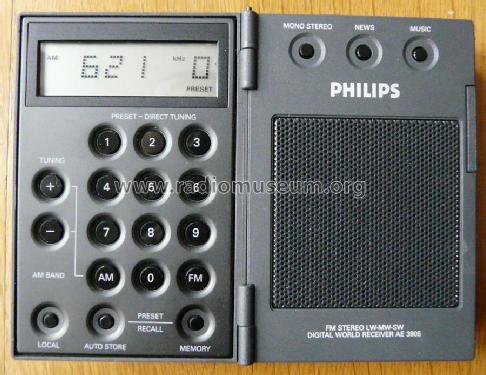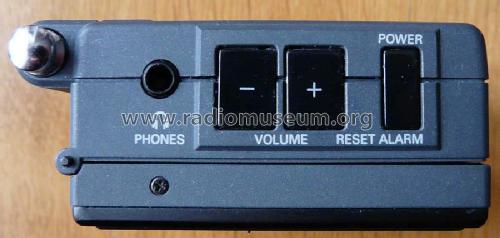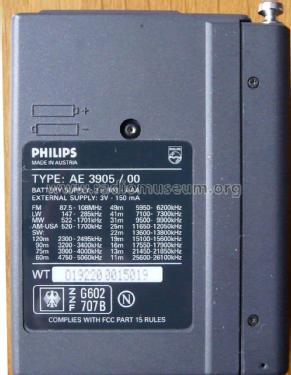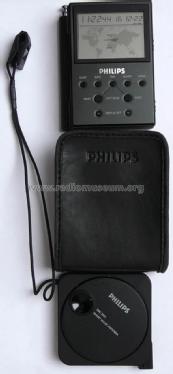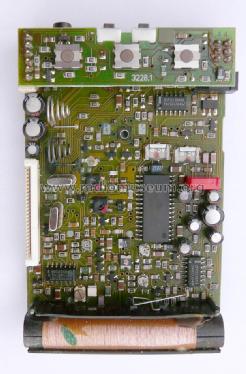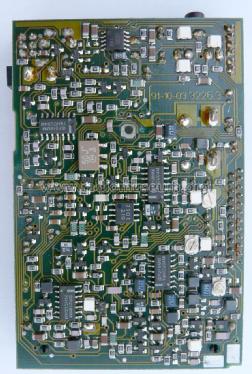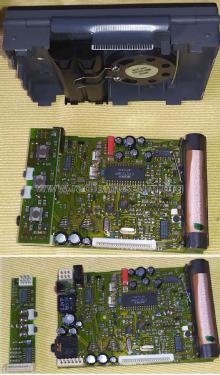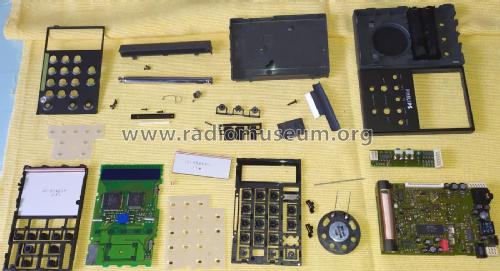AE-3905
Philips - Österreich
- Land
- Österreich / Austria
- Hersteller / Marke
- Philips - Österreich
- Jahr
- 1988 ??
- Kategorie
- Rundfunkempfänger (Radio - oder Tuner nach WW2)
- Radiomuseum.org ID
- 75912
Klicken Sie auf den Schaltplanausschnitt, um diesen kostenlos als Dokument anzufordern.
- Anzahl Transistoren
- Halbleiter vorhanden.
- Halbleiter
- Hauptprinzip
- Super mit Mehrfachmischung
- Wellenbereiche
- Langwelle, Mittelwelle, Kurzwelle und UKW.
- Betriebsart / Volt
- Batterien / Niedervolt Stromversorgung (power jack) / 2 x 1,5 / 3 Volt
- Lautsprecher
- Dynamischer LS, keine Erregerspule (permanentdynamisch) / Ø 4 cm = 1.6 inch
- Material
- Plastikgehäuse (nicht Bakelit), Thermoplast
- von Radiomuseum.org
- Modell: AE-3905 - Philips - Österreich
- Form
- Kleines Reisegerät oder «Taschengerät» < 20 cm.
- Abmessungen (BHT)
- 70 x 90 x 27 mm / 2.8 x 3.5 x 1.1 inch
- Bemerkung
- Der KW-Bereich ist durchgehend und per Direkt-QRG-Eingabe möglich (KW 11-120mB). Ausklappbar, LCD-Display mit Weltzeituhr und Weckfunktion.
- Nettogewicht
- 0.2 kg / 0 lb 7 oz (0.441 lb)
- Datenherkunft
- Radiokatalog Band 2, Ernst Erb
- Autor
- Modellseite von Thorsten Brandenburg angelegt. Siehe bei "Änderungsvorschlag" für weitere Mitarbeit.
- Weitere Modelle
-
Hier finden Sie 1076 Modelle, davon 1010 mit Bildern und 853 mit Schaltbildern.
Alle gelisteten Radios usw. von Philips - Österreich
Sammlungen
Das Modell befindet sich in den Sammlungen folgender Mitglieder.
Forumsbeiträge zum Modell: Philips - Österreich: AE-3905
Threads: 1 | Posts: 4
This radio model uses 8 x MM74HCU04M inverter IC's for a total of 48 CMOS gates biased as analog amplifiers. Kind of unorthodox amplification circuits design, don't you think?
Integrated circuits using complementary metal oxide semiconductor (CMOS) gates were designed for binary operation working as two state switching devices in digital circuits, also adequate to work as crystal or RC oscillators and Schmitt Triggers circuits.
However, several unbuffered inverter CMOS gates IC's may also be suitable candidates to work as linear amplifiers, despite the very scarce manufacturers application notes available on the subject.
The MM74HCU04M with its unbuffered single stage inverter gates, with a simplified internal CMOS transistor pairs arrangement, was chosen for this radio circuit to be used as a stable, low to mid gain analog amplifier in several RF and even on AF stages, due to its high noise immunity, high speed, low input capacitance, high input impedance, high fan-out capacity, and transfer characteristics.
This approach requires a clever design to handle potential instability and unwanted oscillation, maintaining each gate within a very narrow operating point in the so called "linear" region corresponding to the transition zone between the ON and OFF states.
Still, I am surprised to see these gates running at 30MHz (AM RF) and even at 55MHz (1st AM IF) and up to 85.84MHz (1st Local Oscillator). Surely these are selected devices to work in a stable way at that frequencies.
I am not sure about this design choice, considering the alleged (*) inferior sensitivity result when compared with well established designs using JFET transistors as RF amplifiers, for instance.
Still, this is an interesting radio model, unconventional in design, and apparently produced in limited quantities which would make it a collectible model.
(*) Based on some public videos comparing this model against a Sony ICF competitor of the era. Also, my initial tests are not encouraging, with poor MW sensitivity, average FM, and mediane SW, but it may be caused by my unit being defective, as I did not had the time to check it on a lab RF oscillator.
Jose Mesquita, 15.Jun.21

